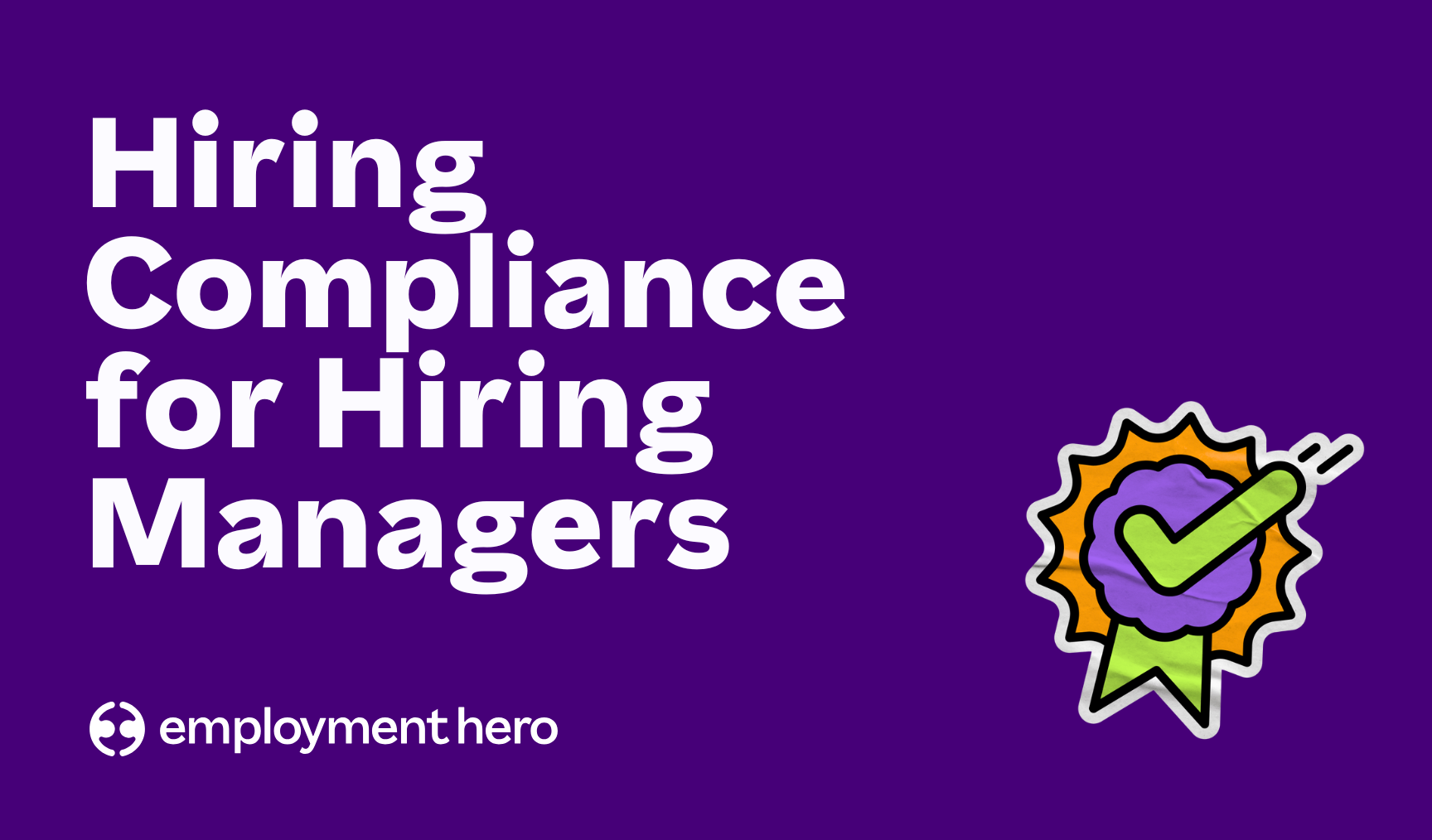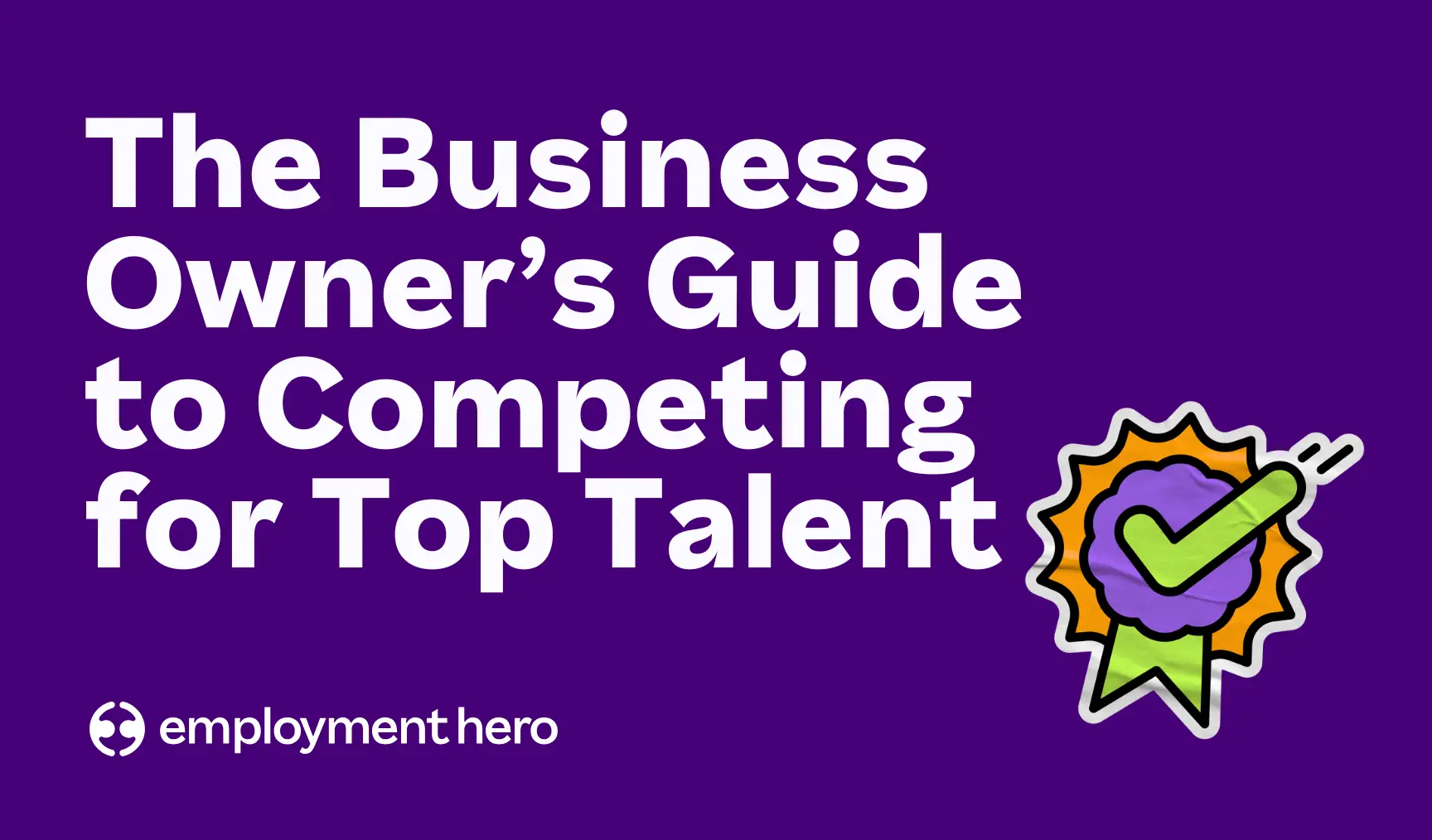Employee Offboarding Process: Step By Step Guide
Published
Employee Offboarding Process: Step By Step Guide
Published
No one ever likes saying goodbye. Due to the Great Resignation phenomenon, however, it’s sadly likely that we’ll see more employee movement over the next 12 months – and employers should be prepared with a great employee offboarding checklist.
It may not always feel like it, but creating a great offboarding process is actually an opportunity. It can send a message to current employees that you value all team members, no matter where they are in the employee life cycle; it’s the perfect chance to get some honest business feedback, and it could influence your leaving team member to return to your business one day.
How do you create an offboarding process?
Our ultimate guide can help. It includes;
- Why is offboarding so important
- How to run effective handovers
- Final offboarding admin
- How to conduct an exit interview
- How to farewell your employees with care
- How to keep in touch for future opportunities
Plus, you’ll also receive:
- Out-of-office email template
- Exit interview template
- Announcement of employee resignation template
- Offboarding checklist template
Disclaimer: The information in this report is relevant as at 5 November 2021, and has been prepared by Employment Hero Pty Ltd ABN (11 160 047 709) (Employment Hero). The views expressed herein are general information only and are provided in good faith to assist employers and their employees. The Information is based on data supplied by third parties. While such data is believed to be accurate, it has not been independently verified and no warranties are given that it is complete, accurate, up to date or fit for the purpose for which it is required. Employment Hero does not accept responsibility for any inaccuracy in such data. To the maximum extent permitted by law, Employment Hero will not be liable to any party in contract, tort (including for negligence) or otherwise for any loss or damage arising either directly or indirectly as a result of reliance on, use of or inability to use any information provided in this report. Where liability cannot be excluded by law then, to the extent permissible by law, liability is limited to the resupply of the information or the reasonable cost of having the information re-supplied.
Employee offboarding process: 10 Steps to a successful exit
Although it can feel like a sting of rejection, an employee’s departure is just another part of being a leader. People quit their roles for all sorts of reasons, and even a company with amazing employee retention strategies will lose people from time to time.
With the effects of the Great Resignation taking place, it’s important to put a plan in place for your employee offboarding process now.
For a comprehensive approach to managing departures, check out our Employee Offboarding Checklist to ensure you cover all necessary steps.
What is employee offboarding?
Employee offboarding is a collaborative process between departing employees, their manager, the human resources department and the employer. It covers everything that happens from the employee’s resignation through to their final day at the business.
The offboarding process is a combination of administrative, practical and communicative tasks. Not every offboarding will be exactly the same, especially when you look at the two kinds of employee departure; voluntary and involuntary.
Voluntary employee departure
A voluntary departure would see the employee hand in their resignation letter, with a notice period that was set out in their employment contract.
This is when an employee leaves the company due to their personal decision and has discussed their decision with the HR department.
Involuntary employee departure
An involuntary departure would see the person’s employment terminated, possibly due to misconduct or poor performance. It could also be a result of them being made redundant.
This is when a company decides to let the employee go. Due to the nature of involuntary departures, terminated employees have little control over the decision.
Involuntary departures are difficult situations to tackle as HR managers or an employer and call for case-by-case considerations for their offboarding that should be arranged with an employment law specialist.
In this article, we’re talking specifically about voluntary departures.
The importance of having an employee offboarding checklist in place
Since employee offboarding is a detailed process made up of many moving parts, we highly recommend using an employee offboarding checklist template. This will make sure that no part of this important process is forgotten.
Did you know Employment Hero has an on-platform employee offboarding checklist?
Never miss a step in the offboarding process, and customise your checklist with any additional offboarding tasks that are unique to your company. You can assign the checklist to the departing employee, set due dates and keep track of what still needs to be done.
It’s your easiest and most transparent offboarding process ever.
For insights into preventing staff turnover, read our Employer’s Guide to Reduce Staff Turnover.
10 Steps to a successful employee offboarding process
Here are the core elements of a successful offboarding process, so you can send off your exiting employee through a smooth transition and gain valuable feedback along the way.
1. Organise an exit interview
Exit interviews have traditionally been quite an awkward meeting full of cringe-worthy silences, but they really don’t have to be.
These meetings are a golden opportunity for honest feedback on their employee experience during the employee’s tenure. As the employee’s responsibilities wrap up and they take a backseat in the business, they are more likely to speak candidly.
When you ask about their personal experience, their view of their department and the wider business, and their role – you’re likely to hear about potential red flags you’ve never considered or be made aware of behaviour you’ve never been privy to.
You’re not going to get that kind of insight into your company culture every day.
2. Communicate the departure date
Don’t let rumours or chatter cloud your employee’s departure.
After your employee has formally resigned, be sure to notify the HR manager, team leaders, and other employees about the employee’s departure – write a considered message or email to announce the employee is leaving to the team.
This step can often be forgotten in the rush of offboarding admin, but it’s an essential one. It encourages transparency in your team and communication throughout the business.
Struggling to find the right words? Download our guide to employee offboarding now to access our employee departure email announcement template.
3. Transfer the employee’s knowledge with a detailed handover
Most of the time, when an employee leaves, their role will be unfilled for a period of time. This means those responsibilities must be passed on to other team members and then their replacement new hire.
In order for a role to be completed to the standard of your leaving team member, a knowledge transfer process is essential.
Once you’ve decided how your departing employees’ work will be distributed, host an initial meeting with the person who is leaving and the people to whom their work will be allocated.
Make a list of tasks that are part of the person’s everyday workload and allocate them to the new owners, then create a cloud-based, accessible (but secure) place for the team to access the departing person’s work and documents.
4. Notify the person’s external contacts
Your departing team member is likely the person of contact for many customers, clients and vendors or suppliers. Especially in the case of customers and clients, it can be a bad look if their main contact at your business just disappears.
Make sure that your staff member is notifying them of their departure and passing on the contact details of the next relevant person.
5. Recover company assets
It can be difficult to get a hold of equipment after your employees leave, especially if that employee is moving abroad for their next role.
Make sure that before or as they are finishing, you can recover any company equipment, including; laptops, office furniture, keyboards, mobile phones, corporate credit cards, uniforms and any other company property that was given to them for their role.
You should also revoke systems access for your former employees and prevent them from being able to access company data.
Employment Hero’s Asset Register feature allows you to create a list of assets owned by your organisation, specify the code, the category it falls under, the purchase amount and the name of the item owner.
With filtering, viewing and uploading options, it’s the easiest way to keep track of company assets around your business.
6. Update your org charts and company directory
Many companies, especially those that have employees working remotely, relying on up-to-date organisational charts and company directories.
These should always be a source of truth, so don’t forget this quick but important bit of admin after your employee has departed.
7. Complete the final payment process
When your employee finishes up with your business, they will need to be paid out any entitlements, which may include annual leave as part of their last paycheck.
Always check in with a finance or payroll expert to make sure that you’re providing the final pay information on your employee’s last payroll according to local compliance.
When you use Employment Hero Payroll, you can easily view and process compliant payments, and the relevant records will be stored within the platform.
8. Thank the departing employee
Creating a special moment for your team to acknowledge the person’s departure and celebrate their time with the business is really important. It’s an essential part of showing that you have respect and appreciation for everyone in your team, no matter where they are in the employee lifecycle.
Make sure that you organise a virtual or physical farewell for your departing staff member.
Schedule the farewell event within work hours so that you can have as much of your team attend as possible. If your departing team member’s last day is a Friday, Friday afternoon drinks are the perfect option.
At their farewell party, present the person with a card (or virtual card) signed by the whole team and a gift from the company. This will have them leaving with fond memories and good sentiments about your business.
Looking for more intel on how to send off your employees in the best way? Watch our Talent Wars 2022 panel discussion on how to help your exiting employees depart with care.
9. Provide letters of reference and exiting documentation
This is the final thing that you can do for your departing employee. Assuming you are happy with the work that they did for you during their tenure, be sure to offer to provide letters of reference.
This is the best way to finish a positive offboarding experience and turn your exiting employee into an advocate for your company.
10. Keep in touch
Now that the offboarding is over, so is your relationship with your former employee, right?
Not necessarily. We strongly recommend keeping in touch with your former employees if you are able to do so. Especially if you left things on the best possible note (due to an epic offboarding experience), you should maintain a relationship even as they pursue their next step.
There are also the general networking benefits of maintaining a friendly rapport with the departing staff member.
Doing so makes it much easier to reach out to them to see if they have job-seeking friends that might be appropriate for a role you’re recruiting for or for possible mentorship opportunities for your current and future employees.
An easy way to do this is to connect with them on LinkedIn if they have one. This makes it easy for you to keep up with them and their professional achievements.
For further assistance in managing your employees from the start, refer to our Ultimate Employee Onboarding Guide.
It’s never fun to say goodbye…
…but it can be a positive experience for everyone involved. If you get it right, you could even improve your overall workplace morale or, even better, see team members boomerang back to your business in the future.
We’ve only scratched the surface of the offboarding process. To give yours a total refresh, download our free ultimate guide to offboarding; it includes all the information, offboarding template and offboarding tools you need to master this essential HR function.
Download the employee offboarding guide now.
Related Resources
-
 Read more: Hire like a Hero: How to Source and Engage Top Talent
Read more: Hire like a Hero: How to Source and Engage Top TalentHire like a Hero: How to Source and Engage Top Talent
Hiring top talent is one of the most powerful ways to grow your business. Every great hire is an opportunity…
-
 Read more: Recruitment compliance do’s and don’ts: Hiring compliance for hiring managers
Read more: Recruitment compliance do’s and don’ts: Hiring compliance for hiring managersRecruitment compliance do’s and don’ts: Hiring compliance for hiring managers
Published 1 min read Having responsibility for a business’s approach to hiring can be daunting: how do you ensure all…
-
 Read more: Hiring Issues Holding You Back? The Business Owner’s Guide to Competing for Top Talent
Read more: Hiring Issues Holding You Back? The Business Owner’s Guide to Competing for Top TalentHiring Issues Holding You Back? The Business Owner’s Guide to Competing for Top Talent
Published 1 min read Hiring great people is one of the most powerful ways to grow your business – but…










